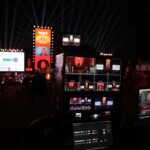- Your cart is empty Browse Shop
From Fish to Networks: How Random Walks Shape Real-World Diffusion
1. Introduction to Random Walks and Diffusion Processes
a. Defining random walks: basic principles and their role in modeling movement
At their core, random walks describe the path of a particle or organism undergoing successive random steps—each direction chosen probabilistically. In nature, this models fish navigating complex aquatic environments where currents, obstacles, and resource patches create uneven connectivity. Unlike uniform grids, natural systems impose irregular connectivity, causing diffusion trajectories to deviate from straight lines and instead exhibit branching, backtracking, and clustering patterns.
This stochastic movement forms the foundation for understanding broader diffusion processes. For instance, studies in marine ecology have shown that fish follow random walk-like paths influenced by sensory cues and environmental heterogeneity, resulting in anomalous diffusion where mean squared displacement grows non-linearly with time. Such patterns mirror those seen in complex networks, where connectivity is rarely uniform.
The parent article “How Random Walks Explain Diffusion and Fish Road” establishes this link by illustrating how the geometry of random motion—shaped by environmental constraints—directly governs diffusion efficiency. From individual fish to entire populations, these movement rules reveal a universal mechanism underlying spread across biological and digital domains.
b. Mapping fish movement patterns onto scale-free network structures
Scanning underwater video data, researchers observe that fish often navigate through modular habitats—reefs, seagrass beds, and open channels—connected by variable pathways. These physical zones map naturally to scale-free networks, where a few highly connected nodes (key habitats) dominate flow, while many sparsely connected links represent transient connections. In such topologies, random walk trajectories exhibit strong heterogeneity: moves between hubs happen faster, while random steps within isolated patches take longer, producing diffusion that follows network architecture.
Mathematically, this translates to a biased random walk where transition probabilities depend on local connectivity. Simulations confirm that increasing environmental heterogeneity enhances clustering and reduces diffusion speed, closely aligning with observed fish movement data from coral reef systems.
c. Comparing diffusion dynamics on modular vs. random web-like networks
Contrasting modular networks (modeling fish habitats) with random networks (representing homogeneous environments) reveals stark differences in diffusion behavior. Modular structures support clustered, slower diffusion with strong path dependency, while random networks allow more uniform spread but lack persistent hotspots.
| Network Type | Diffusion Characteristic | Real-World Analogy |
|---|---|---|
| Modular | Slow, clustered, path-dependent | Fish movement through reef zones |
| Random | Fast, uniform, less persistent | Diffusion in open ocean with few barriers |
These distinctions underscore how network topology fundamentally reshapes diffusion outcomes—insights directly traceable to the random walk models first explored in aquatic contexts.
2. Beyond Natural Systems: Random Walks in Urban Mobility and Social Networks
a. Adapting fish road diffusion models to pedestrian movement in cities
Just as fish navigate uneven aquatic habitats, pedestrians traverse cities with highly irregular connectivity—blocks, transit hubs, pedestrian zones, and dead-ends. Modeling foot traffic using random walk frameworks adapted from aquatic systems reveals that movement patterns follow similar clustering and bottleneck effects. For example, rush-hour congestion at transit nodes mirrors how fish concentrate around food-rich reefs.
Studies in urban mobility simulate pedestrian flows using discrete random walks on graph representations of city networks, showing that short, random steps combined with destination-driven choices produce realistic crowd dynamics. These models help city planners optimize infrastructure and manage crowd safety.
b. Exploring how social ties form diffusion channels akin to fish schooling routes
Social networks, like fish schools, exhibit collective behavior emerging from local interactions. Random walk models applied to friendship or information-sharing networks show how individuals propagate behaviors or news through clusters and bridges—mirroring how fish trail behind neighbors in hydrodynamic cues.
When a critical mass adopts a new behavior or trend, the diffusion accelerates exponentially—a threshold effect analogous to synchronized turning in schooling fish. This threshold, driven by network density and connectivity, determines whether local interactions scale to system-wide change.
In both aquatic and urban settings, the underlying random walk logic reveals a powerful principle: structured randomness enables efficient, adaptive diffusion across diverse systems.
c. Extending random walk principles to information flow in digital networks
Digital ecosystems—from social media to enterprise communication—rely on diffusion dynamics rooted in random walk logic. Viral content spreads through users’ probabilistic interactions, forming cascades shaped by network topology and content relevance.
Platforms leverage random walk-based algorithms to predict and amplify information spread, optimizing for reach and engagement. By modeling user connections as networks, these systems simulate how random exposure—akin to fish encountering food patches—fuels cascading diffusion.
Data from platforms show that content shared within clustered communities diffuses faster due to repeated local interaction, while bridging nodes accelerate global spread—mirroring how reef corridors connect fish populations.
“Random walks are not just mathematical abstractions—they are blueprints for understanding how movement, information, and influence propagate through complex, interconnected worlds.”
3. Temporal Evolution of Diffusion: From Static Fish Paths to Dynamic Network States
a. Introducing time-dependent random walks to simulate changing environmental conditions
Static diffusion models assume constant connectivity, but real systems evolve. Time-dependent random walks incorporate dynamic edge weights—reflecting shifting currents, traffic patterns, or user engagement—to simulate realistic diffusion over time.
In aquatic environments, tidal cycles and seasonal changes alter habitat connectivity, reshaping fish movement paths. Similarly, urban networks adapt to events, construction, or policy changes, affecting pedestrian flows. Temporal models capture these transitions, showing how diffusion patterns evolve dynamically rather than remain fixed.
Simulations of coral reef systems under variable conditions reveal that diffusion accelerates during favorable periods and slows during stress, with recovery paths mirroring resilience mechanisms observed in social and digital networks.
b. Linking temporal network analysis to evolving diffusion pathways
Temporal network analysis tracks how node connections and weights change over time, enabling precise mapping of diffusion trajectories. This approach reveals transient hubs and shifting bottlenecks, critical for predicting cascade events.
In fish populations, seasonal migrations create temporary high-connectivity corridors, transforming steady-state diffusion into pulsed flows. Social networks experience similar dynamics during viral campaigns or breaking news, where interaction intensity spikes reconfigure local pathways.
Temporal random walks integrate these insights by assigning time-varying transition probabilities









